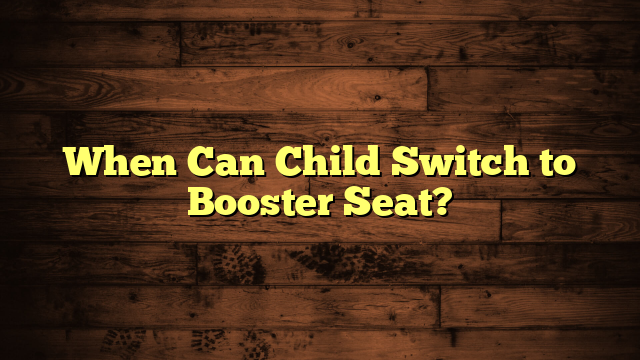When Can Baby Ride in Stroller Without Infant Seat?
You might not realize that the timing for shifting your baby from an infant seat to a stroller can greatly impact their comfort and safety. While many parents assume it's all about age, developmental milestones play an essential role in this decision. Knowing when your child can sit unsupported and maintain head and neck control is key, but there are other factors to take into account, too. What should you look for in a stroller to guarantee it meets your baby's needs? Understanding these aspects can make a big difference in your outings together.
Key Takeaways
- Babies typically transition from infant seats to strollers between 6-12 months, depending on their developmental milestones.
- Key indicators for transition include independent sitting and good head and neck control, usually achieved by 6-8 months.
- Always ensure the stroller is suitable for the baby's age, weight, and developmental stage to maintain safety.
- Gradually introduce the stroller in short trips to help the baby acclimate without the infant seat.
- Maintain secure harness usage in the stroller to ensure the baby's safety during outings.
Understanding Infant Seat Usage
Understanding the importance of infant seat usage can greatly enhance your baby's safety and comfort during outings. When you invest in an infant seat, you're prioritizing infant seat safety, which is vital for protecting your little one in the event of an accident.
These seats are specifically designed to support your baby's head and neck, allowing for a secure fit that standard seating can't provide.
Moreover, stroller compatibility is key when choosing an infant seat. Many strollers are designed to work seamlessly with infant seats, making it easy to shift from car to stroller without disturbing your baby.
This convenience means you can go about your day without worry, knowing your infant is safely secured.
It's essential to check the manufacturer's guidelines for both your infant seat and stroller to confirm they're compatible.
Remember, a well-fitted infant seat can make all the difference during your outings, providing peace of mind as you navigate through busy environments.
Key Developmental Milestones
As your baby grows, you'll notice key developmental milestones that signal it's time to shift from the infant seat to the stroller.
You'll want to watch for head and neck control, which usually develops around four to six months, followed by the ability to sit unsupported, typically achieved by six to eight months.
Recognizing these milestones will help you guarantee your little one is safe and comfortable while enjoying stroller rides.
Head and Neck Control
When can you feel confident that your baby has developed the necessary head and neck control to ride in a stroller without an infant seat? Typically, this milestone occurs around 4 to 6 months of age, but every baby is different. You'll want to verify your little one has adequate head support and neck stability before making the switch.
Here's a quick reference table to help you track your baby's development regarding head and neck control:
| Age Range | Head Support | Neck Stability |
|---|---|---|
| 0-2 months | Limited support | Poor stability |
| 3-4 months | Some support | Developing strength |
| 5-6 months | Good support | Moderate stability |
| 7+ months | Excellent support | Strong and stable |
Sitting Unsupported
Sitting unsupported is a significant milestone in your baby's development, marking increased strength and coordination. This ability usually emerges around six to eight months, but every baby is unique.
You'll notice improved baby posture, as they begin to sit upright without relying on support. As your baby demonstrates developmental readiness, you'll see them attempt to balance, using their core muscles to stabilize themselves.
To encourage this skill, provide opportunities for your baby to practice sitting on a soft surface. Surround them with toys to keep them engaged and motivated. It's crucial to supervise closely, as falls are common during this stage.
You might observe your little one leaning forward, which is a natural way to explore their balance and strengthen those important muscles.
Once your baby can sit unsupported for extended periods, it's a good indicator that they're ready for the next phase of mobility. This newfound independence also means they can shift from an infant seat to a stroller, allowing for more interaction with the world around them.
Always remember, each baby develops at their own pace, so celebrate their progress and enjoy this exciting journey together!
Recommended Age for Transition
Deciding when your baby can move from an infant seat to a stroller can be a pivotal moment in your parenting journey. The recommended change age generally falls between 6 to 12 months, but this can vary based on your child's development.
You should look for signs of stroller readiness, such as your baby sitting up independently and having good head control.
Every baby develops at their own pace, so it's crucial to think about your child's unique milestones. If your little one can sit unsupported for extended periods, they're likely ready for the more open design of a stroller. This isn't just about age; it's about ensuring your baby feels secure and comfortable in this new setting.
Before you make the switch, observe how your baby reacts to being in different positions. If they seem enthusiastic to explore their surroundings and can hold themselves upright, it's a good indication that they're ready for this new adventure.
Changing from an infant seat to a stroller can open up a world of experiences for both of you, so trust your instincts and enjoy the journey!
Stroller Features to Consider
When choosing a stroller, you'll want to contemplate several important features.
Look at the weight capacity to guarantee it can accommodate your growing child, and check the seat recline options for comfort during naps.
Furthermore, a good safety harness is essential for keeping your little one secure while you're on the go.
Stroller Weight Capacity
Understanding stroller weight capacity is essential, especially since it directly impacts your baby's safety and comfort. Each stroller comes with a specified weight limit, so it's vital to check that before you start using it without an infant seat. Exceeding this limit can affect the stroller's durability and may compromise its structural integrity, putting your child at risk.
When selecting a stroller, consider how weight distribution affects its performance. A well-designed stroller will evenly distribute weight, ensuring stability during use, particularly on uneven terrain. If the weight isn't distributed properly, it can lead to tipping, which is dangerous for you and your baby.
Also, remember that your child's weight doesn't just account for their body. As they grow, you might also be carrying bags or supplies. Be sure to factor in these additional items when considering the stroller's weight capacity.
Seat Recline Options
Choosing the right seat recline options can greatly enhance your baby's comfort while strolling. When it comes to selecting a stroller, consider how different reclining options can accommodate your child's needs. Here's what to look for:
- Multiple Seat Adjustments: Strollers with various reclining options allow you to find the perfect angle for your baby, whether they're napping or observing their surroundings.
- Flat Recline Feature: A stroller that can fully recline is ideal for younger babies who need to lie flat for safe and comfortable resting.
- Adjustable Footrest: Look for strollers that offer footrest adjustments to provide extra support, especially as your baby grows.
With these features, you'll guarantee that your little one is cozy and well-supported during outings.
Furthermore, pay attention to how easily you can make these seat adjustments. Quick and simple adjustments can save you time and help you keep your baby comfortable without any hassle.
A stroller with flexible reclining options not only boosts comfort but also adds to the overall usability, making your strolls more enjoyable for both you and your baby.
Safety Harness Features
A secure safety harness is a key feature to look for in a stroller, as it guarantees your baby stays safely in place during your outings. When considering safety harness types, you'll typically find three-point and five-point harnesses. Both options provide security, but a five-point harness offers extra protection by securing your baby at the shoulders, waist, and between the legs.
It's vital to also pay attention to harness adjustment. A well-designed harness should be easy to adjust, allowing you to customize the fit as your baby grows. This ascertains that your little one remains snug and secure, whether they're sitting up or reclining.
Here's a quick comparison of the two common safety harness types:
| Safety Harness Type | Features |
|---|---|
| Three-Point | Simple design, easy to use, suitable for older infants |
| Five-Point | Maximum security, adjustable straps, ideal for younger babies |
Choosing the right safety harness can make a significant difference in your stroller's safety. Remember, a reliable harness is your first line of defense in keeping your baby safe during every adventure.
Safety Guidelines for Stroller Use
When it comes to stroller safety, parents and caregivers should prioritize guidelines that guarantee a secure and comfortable ride for their little ones.
Following these key safety rules can help you ascertain both stroller safety and baby comfort:
- Always use the safety harness: Secure your baby with the harness every time you buckle them in. This prevents falls and guarantees they remain safely seated.
- Avoid hanging items from the stroller: While it may be tempting to hang bags from the handle, this can cause the stroller to tip over. Keep your stroller balanced for maximum safety.
- Regularly check for wear and tear: Inspect the stroller for any damage or loose parts before each use. Ascertaining everything is in working order can help prevent accidents.
Choosing the Right Stroller
Finding the right stroller can greatly enhance your baby's comfort and safety while you're out and about. With various stroller types available, it's crucial to choose one that fits your lifestyle.
For instance, if you're an active parent, consider a jogging stroller that offers stability and ease on rough terrain. If you often navigate tight spaces, a compact umbrella stroller might be your best bet.
Don't forget about stroller accessories! Items like cup holders, sunshades, and storage baskets can make your outings much more convenient.
For example, a sunshade protects your baby from harmful rays during sunny walks, while a storage basket provides easy access to essentials like diapers and snacks.
As you evaluate your options, think about your baby's age, weight, and developmental stage. Some strollers can convert from infant to toddler seats, which can save you money in the long run.
Ultimately, the right stroller should align with your daily routine and make outings enjoyable for both you and your little one. Always test the stroller's maneuverability and ease of use before making your final decision!
Tips for a Smooth Transition
Shifting your baby from an infant seat to a stroller can feel overwhelming, but with a bit of planning, it can be a smooth process. To ease the change, consider these strategies that focus on stroller compatibility and comfort:
- Start Gradually: Begin with short trips in the stroller. This helps your baby adjust to the new seating arrangement without overwhelming them.
- Familiarize with the Stroller: Allow your baby to explore the stroller at home. Let them sit in it for brief periods while you play or read nearby, so they can associate it with comfort and fun.
- Check Compatibility: Verify your stroller is suitable for your baby's age and weight. Some strollers have adjustable features that cater to their growth.
Using these change strategies can make the shift less intimidating.
Always keep your baby's comfort and safety in mind. By taking it slow and being mindful of the stroller's compatibility with your baby's needs, you'll foster a positive experience for both of you.
Soon enough, your little one will be enjoying strolls like a pro!
Frequently Asked Questions
Can I Use a Stroller Without an Infant Seat for Newborns?
Using a stroller without an infant seat for newborns isn't recommended due to safety concerns. Instead, consider stroller alternatives designed for newborn safety, ensuring your little one stays secure and comfortable during outings.
What Type of Stroller Is Best for Older Infants?
For older infants, lightweight strollers are great for easy maneuverability, while convertible strollers offer versatility as your child grows. Choose one that suits your lifestyle and makes outings comfortable for both you and your baby.
How Do I Secure My Baby in the Stroller?
To secure your baby in the stroller, always use the baby harness. Make sure it's snug but comfortable, ensuring stroller safety. Check for proper adjustments before each outing to keep your little one secure and safe.
Can I Attach a Car Seat to Any Stroller?
Sure, you can attach a car seat to any stroller—if you enjoy balancing on a tightrope! Check for car seat compatibility and stroller features first; not all strollers accommodate every car seat.
Is It Safe to Jog With a Stroller?
Jogging with a stroller can be safe, but you need to guarantee proper stroller stability. Choose a jogging stroller designed for this purpose, and always follow jogging safety guidelines to keep both you and your baby secure.
Conclusion
In summary, shifting from an infant seat to a stroller is a significant step in your baby's journey. By recognizing their readiness, considering essential stroller features, and following safety guidelines, you can guarantee a smooth switch. As your little one explores the world with excitement, remember to prioritize their comfort and security. With careful consideration and a dash of diligence, this delightful discovery can be a safe and enjoyable experience for both you and your baby.
- Can I Get in a Taxi Without a Car Seat? - January 26, 2025
- Can I Get Chlamydia From a Toilet Seat? - January 26, 2025
- Can I Get an Uber With a Car Seat? - January 26, 2025






